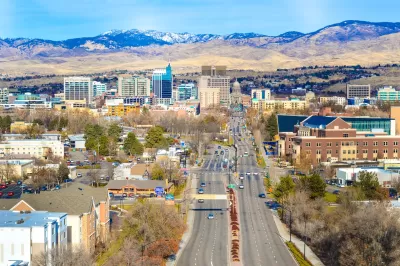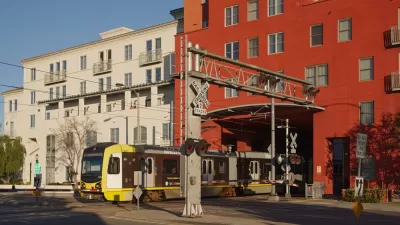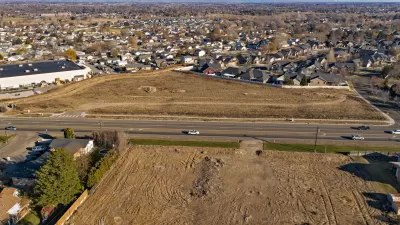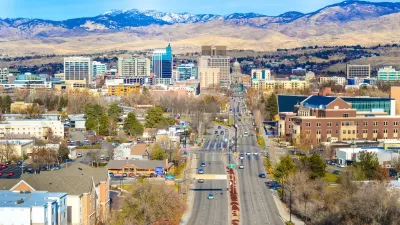The rapidly growing city is evaluating ways to increase housing production, reduce car dependency, and make Boise more walkable.

With housing costs soaring (in January, median rents were up by more than 20 percent from the previous year, rising faster than in any other American city), Boise is looking to revise its zoning code and guide denser development in the rapidly growing city, reports Joni Auden Land for the Idaho Statesman.
"Most council members agreed they wanted the new code to allow for a more urban environment, rather than what they characterized as suburban planning guidelines in the [draft] module," writes Land. Council members expressed a desire to see taller buildings, reduced parking requirements, legalized accessory dwelling units (ADUs) such as garage apartments, and mixed-use development. "One benefit of this denser planning, they said, could be to increase Boise’s housing supply, which lags far behind demand. Proponents say denser planning could allow for more units to be built and help fill the widening gap," according to the article. "Multiple council members said the draft did not go far enough to make Boise a more walkable city, where residents would not need a car to access businesses, schools and other services." Council Member Holli Woodings called for more mixed-use development that puts businesses closer to where people live.
According to an August 2021 city report, Boise needs more than 27,000 new housing units, 77 percent of which should be affordable, by 2030 to meet growing demand. Boise's population grew by 14 percent in the decade between 2010 and 2020.
FULL STORY: A denser, big-city feel: Council offers new vision for Boise’s future — and affordability

Planetizen Federal Action Tracker
A weekly monitor of how Trump’s orders and actions are impacting planners and planning in America.

Maui's Vacation Rental Debate Turns Ugly
Verbal attacks, misinformation campaigns and fistfights plague a high-stakes debate to convert thousands of vacation rentals into long-term housing.

San Francisco Suspends Traffic Calming Amidst Record Deaths
Citing “a challenging fiscal landscape,” the city will cease the program on the heels of 42 traffic deaths, including 24 pedestrians.

Defunct Pittsburgh Power Plant to Become Residential Tower
A decommissioned steam heat plant will be redeveloped into almost 100 affordable housing units.

Trump Prompts Restructuring of Transportation Research Board in “Unprecedented Overreach”
The TRB has eliminated more than half of its committees including those focused on climate, equity, and cities.

Amtrak Rolls Out New Orleans to Alabama “Mardi Gras” Train
The new service will operate morning and evening departures between Mobile and New Orleans.
Urban Design for Planners 1: Software Tools
This six-course series explores essential urban design concepts using open source software and equips planners with the tools they need to participate fully in the urban design process.
Planning for Universal Design
Learn the tools for implementing Universal Design in planning regulations.
Heyer Gruel & Associates PA
JM Goldson LLC
Custer County Colorado
City of Camden Redevelopment Agency
City of Astoria
Transportation Research & Education Center (TREC) at Portland State University
Jefferson Parish Government
Camden Redevelopment Agency
City of Claremont





























